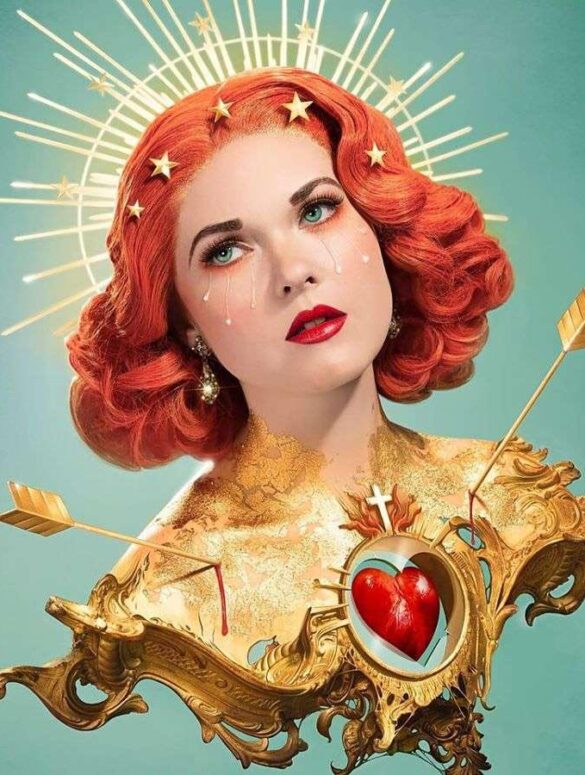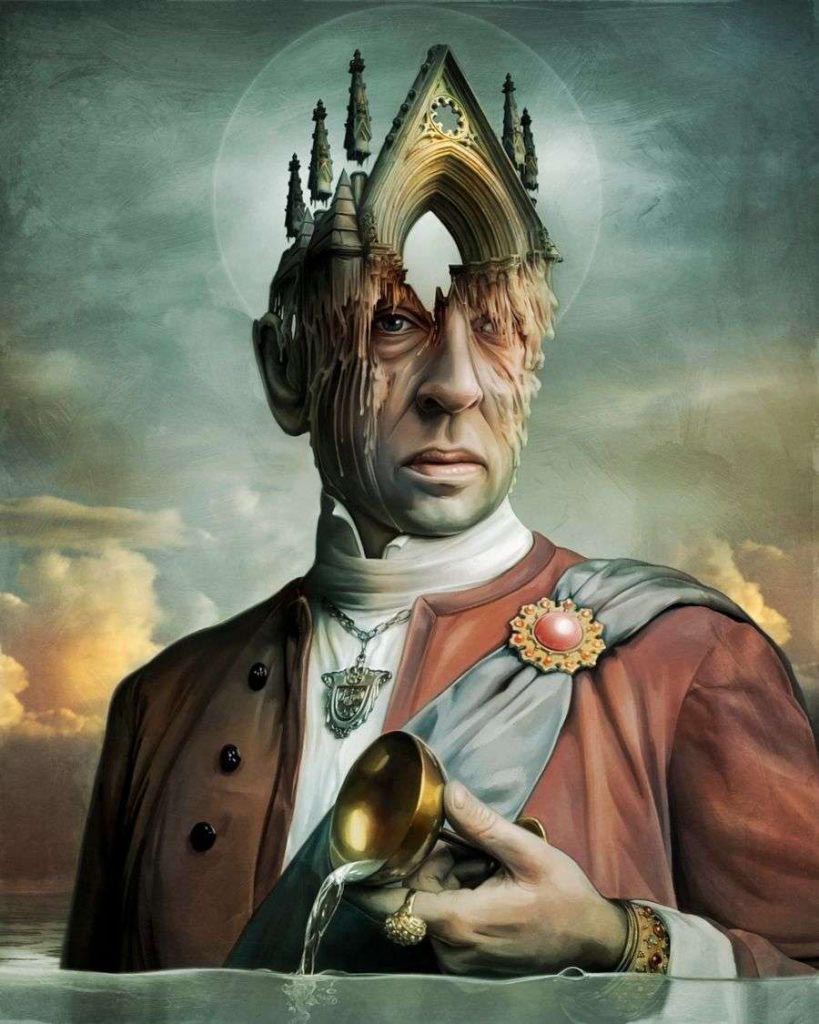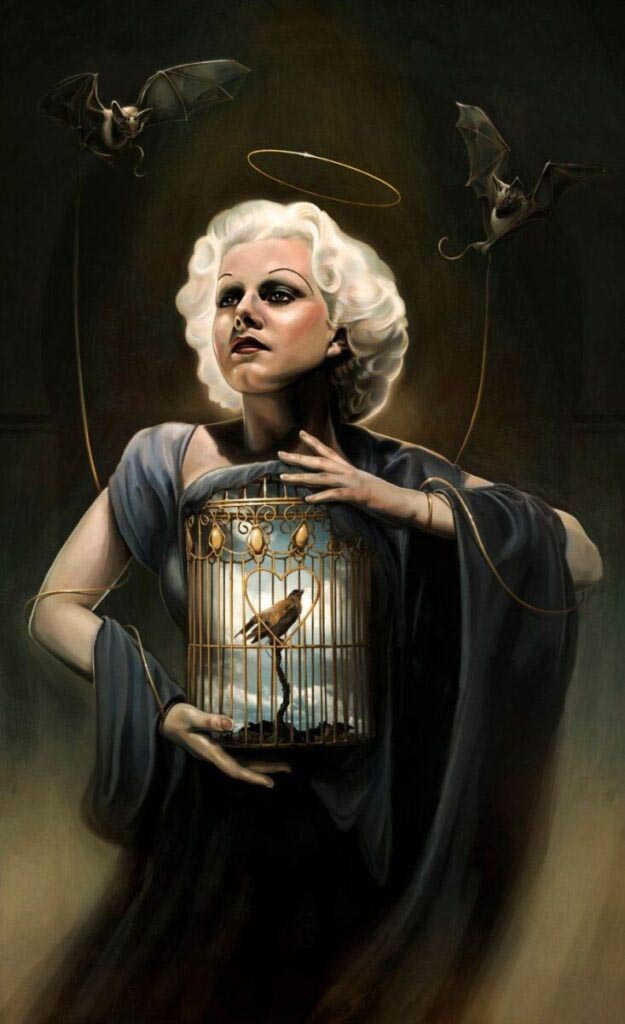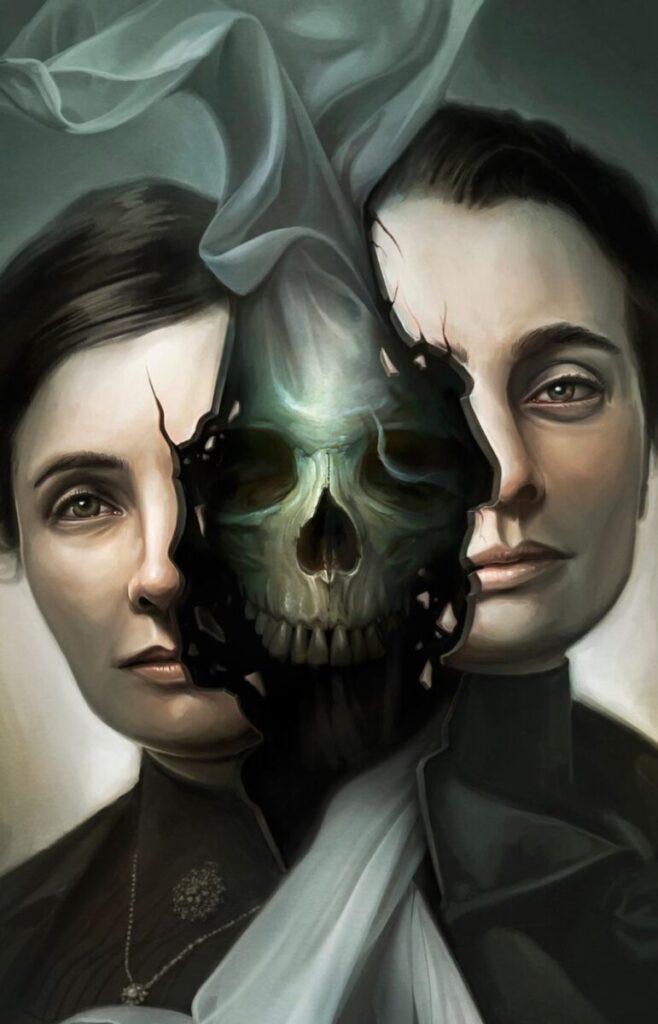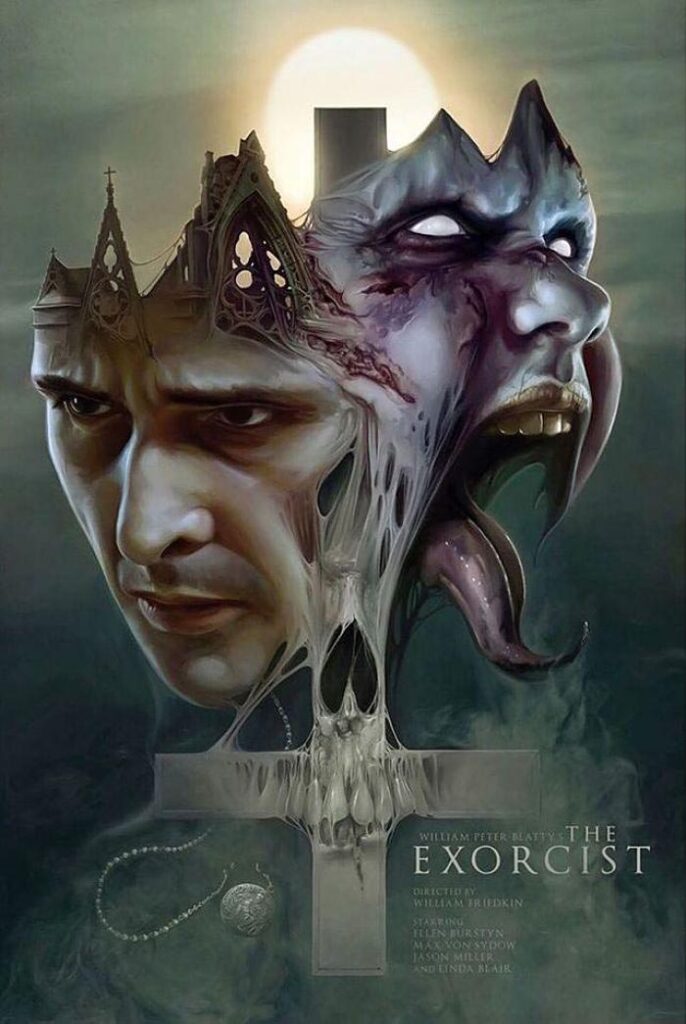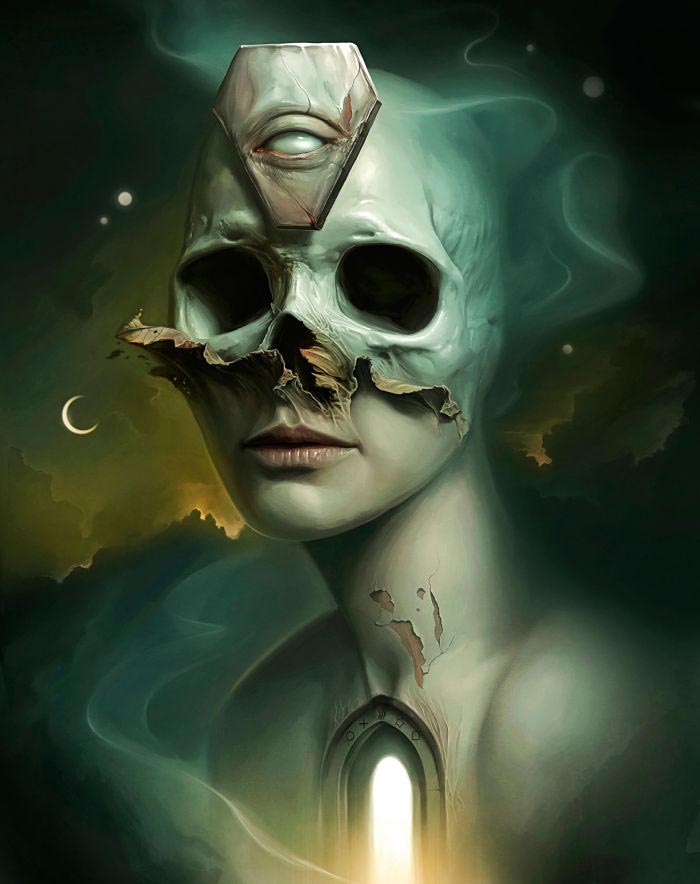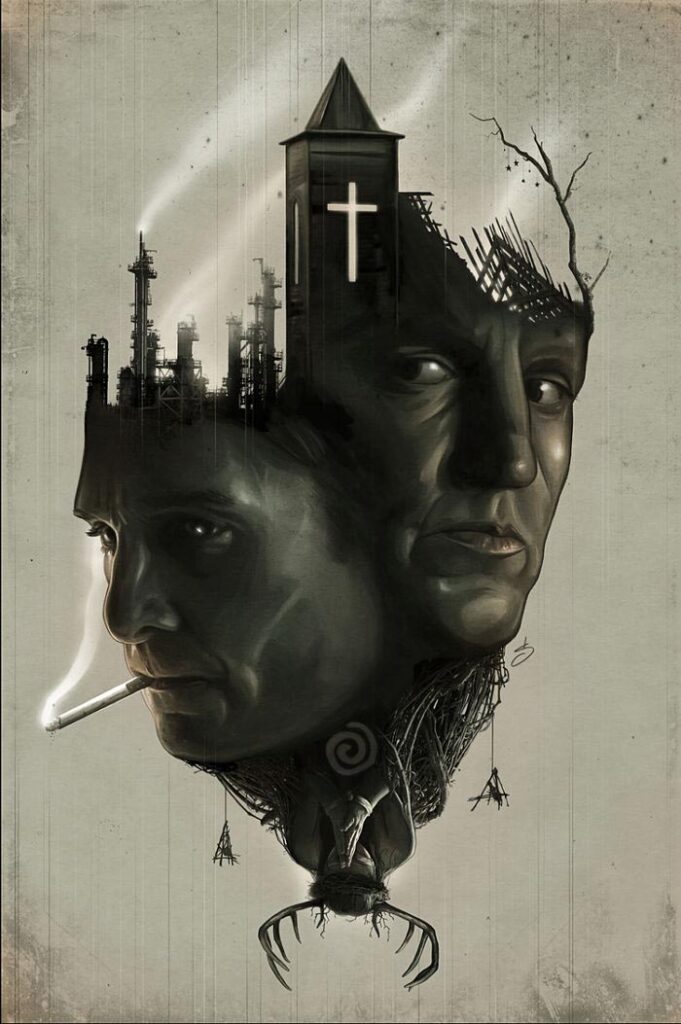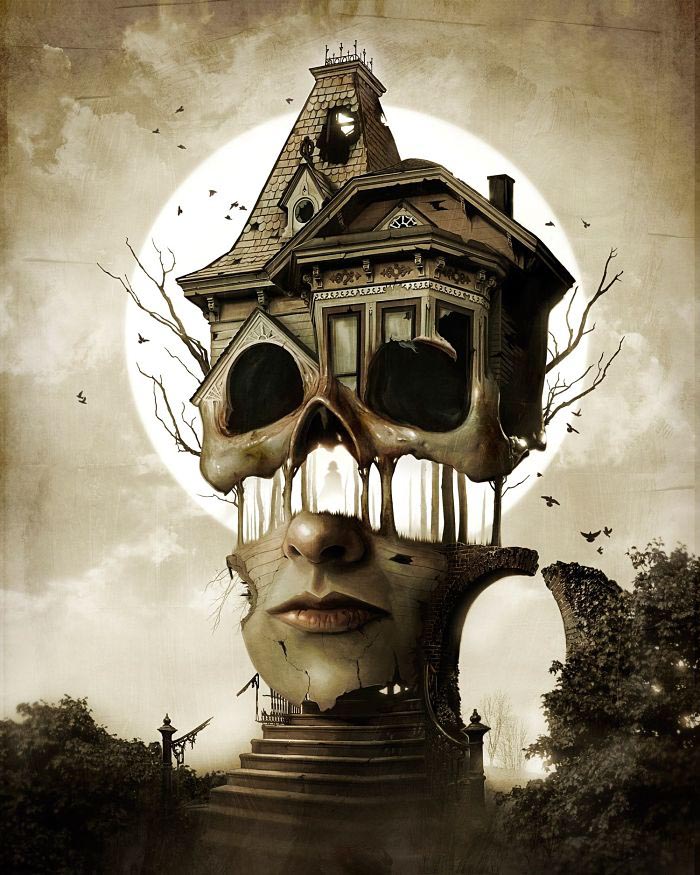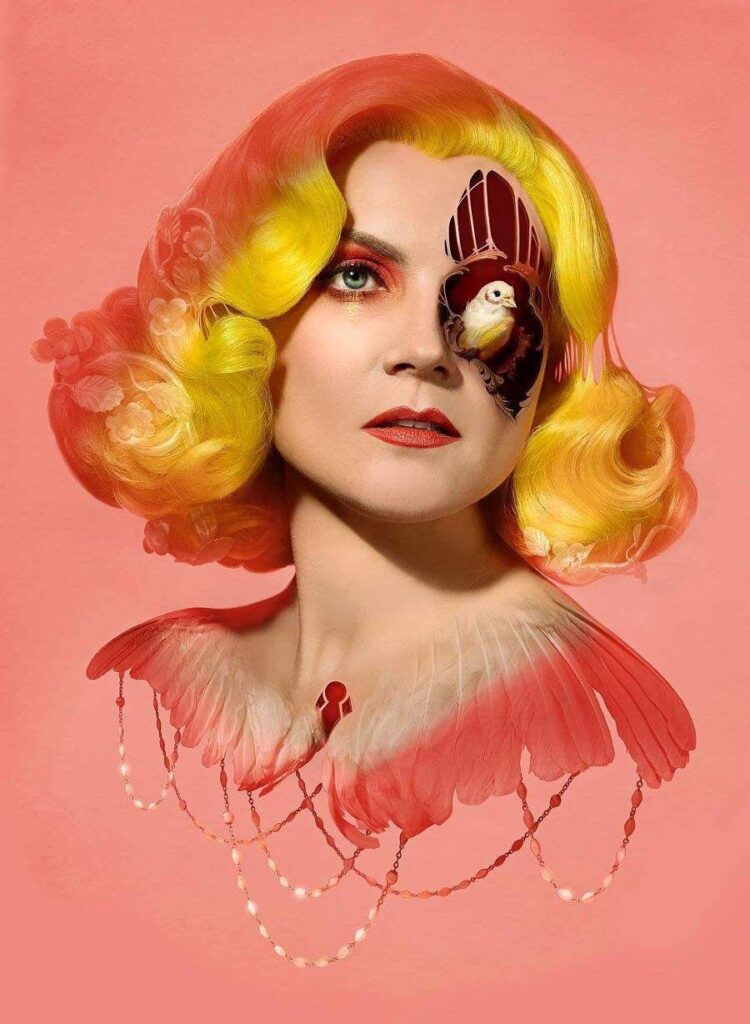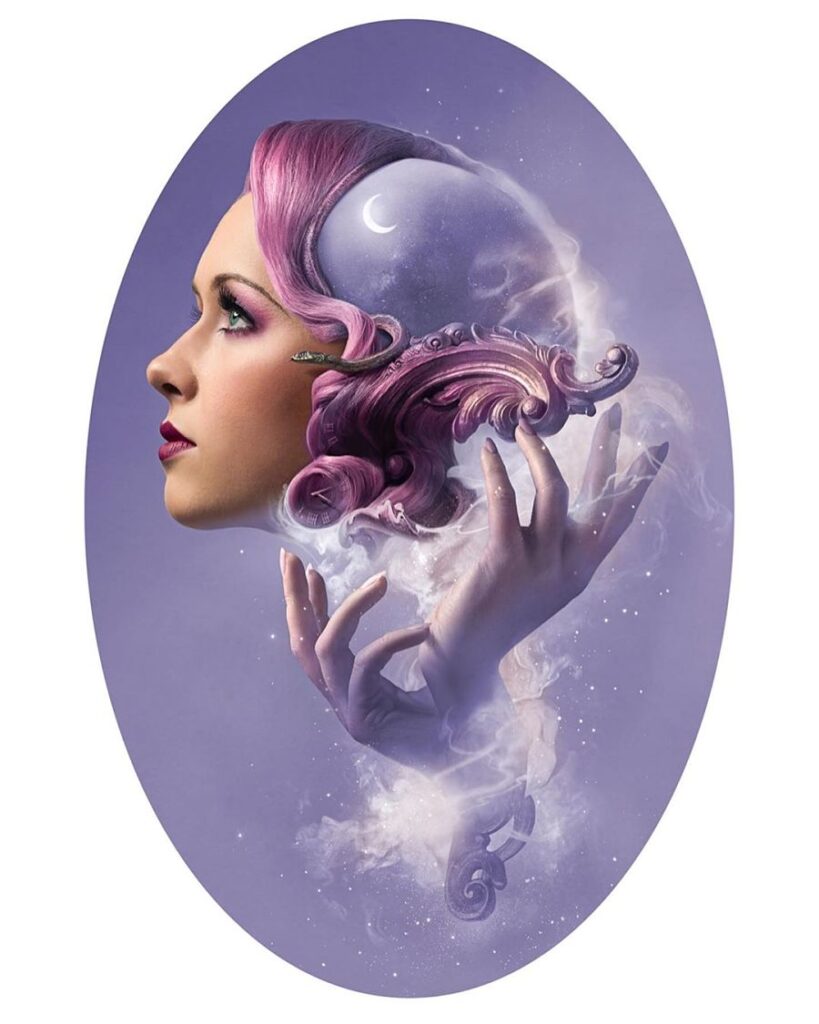Exclusive Interview with David Seidman
3rd Prize Winner, Digital Art Award, 2019 Beautiful Bizarre Art Prize
Summoning the visual equivalent of one’s creative essence can be genetically preordained; a ‘live or die trying‘ directive that is coded into the synapses. David Seidman’s raison d’etre certainly reflects this idea. The surreal digital painter is passionate about generating artistically revelatory moments that hang in the ether, toying with our subconscious. He is an artist who infuses every one of his canvases with a little piece of his soul. As you can imagine, this level of dedication comes with personal sacrifice. How does Seidman deliver himself from the anguish of this creative purgatory? For him, sweet salvation reveals itself in the form of digitally divine artistic intervention.
To enter the 2020 Beautiful Bizarre Art Prize in any of the four Award categories: INPRNT Traditional Art Award, Yasha Young Projects Sculpture Award, ZBrush Digital Art Award or iCanvas Photography Award, and for your chance to receive global exposure for your work + share in over US$35,000 in cash and prizes, click here.
Beneath each of Philadelphia-based David Seidman’s haunted canvases lurks an inexplicably seductive realm, one that human beings have long feared yet endlessly wax poetic about. It is within this shadowy dimension of existence that the exacting artist sheds ample light on classically heady contemplations. He conjures up grimly fiendish scenarios that address the fragility of our human condition while offering glimpses of the melancholic beauty inherent within the great unknown.
We’ve only just begun gaining insight into the motivations of this intriguing digital painter with dueling complexities. Time to descend ever deeper into David Seidman’s artistic netherworld, smudge sticks and cleansing crystals optional. This way, please…
I actually get a lot of my inspiration in those waking moments between my dream states. It’s in those moments when my insomnia takes hold and I focus on forming images and concepts in my head.
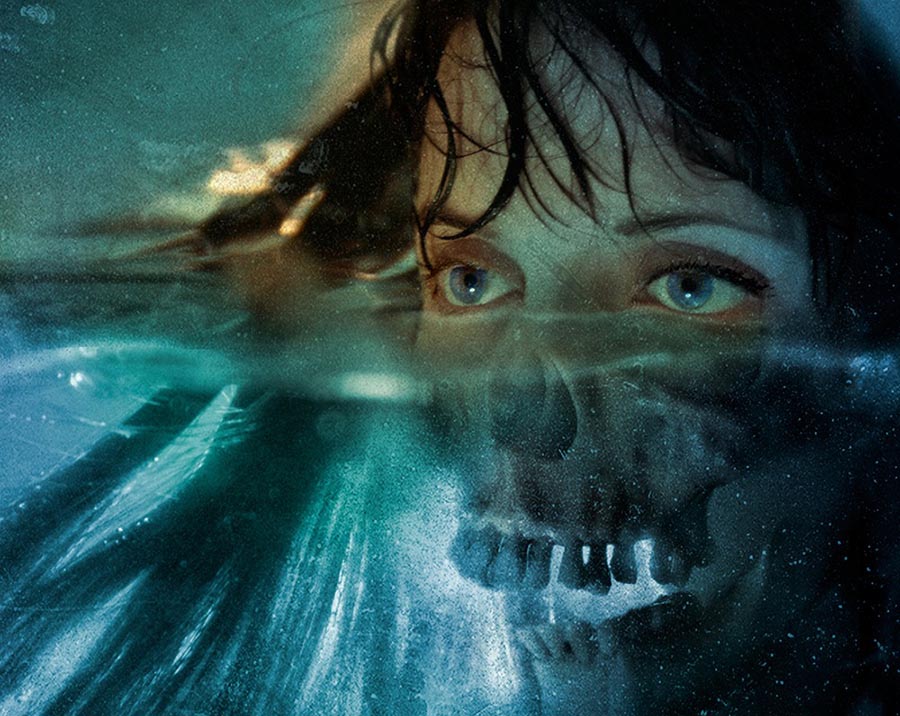
Pouring through your dark, underworld-saturated body of work, it’s hard to imagine that your dreams are filled with wagging puppy dog tails and hula hooping unicorns…. or are they? Do you regularly mine your dream state for sources of canvas inspiration or are your artistic ideas plucked right out of your waking moments?
I actually get a lot of my inspiration in those waking moments between my dream states. It’s in those moments when my insomnia takes hold and I focus on forming images and concepts in my head. Sometimes they are based on stories I might have read or something that might have happened that week. Most of the time, bits and pieces of those moments end up in my sketches and final pieces.
Do you maintain an idea journal and/or conceptual sketchbook? Are you secretive about what you keep in there or are your rough ideas quite literally an open book?
I do have several sketchbooks that I use to jot down ideas and concepts. I am terribly organized, so there are several half-filled sketchbooks floating around that I can randomly grab to commit ideas to paper. It’s not that I am secretive about my sketches or concepts, to me, they are just smaller unfinished pieces of something bigger so they’re not worth showing anyone.
Is it safe to say that your visual tastes are eclectic? What imagery might you plaster all over a mood board to keep your creative floodgates open?
The floodgates seem to only open and close when THEY want to, although I have a few go-to visuals that help crack open the gates when needed. Artists like Joel-Peter Witkin and Zdzisław Beksiński always seem to do the trick. Movie or TV scores like Max Richter’s The Leftovers soundtrack help when sketching. I also love saving unusual news stories and tales of the supernatural for inspiration.
Creating art feels like an obsession, as I think it is for most artists. It is hard for me to take regular time out to smell the roses without thinking of how I could twist and change those roses into a surreal piece of art.
Can you think of a few creativity mood killers that might completely derail your artistic train of thought?
Pretty much anything that is not creative can and will derail my artistic thought process. I think that there are a lucky group of creatives who can turn everyday problems on and off with a flick of a switch. Maybe they can even use those stresses to create better artwork. I am, unfortunately, not one of those artists. Thankfully, caffeine, music and working late at night when the world is asleep all help me to quiet everyday life and focus creatively.
You’ve mentioned that you were always creatively inclined in your youth. It was the encouragement of a high school art teacher, however, that made you realize that drawing pictures – for a living, no less!! – might actually be doable. Do you ever think about how life-altering her support was?
My high school art teacher, Mrs. Hricko, absolutely put me on the right path to creating a career in the arts. I was entering my senior year with no idea what I would do with the rest of my life. It’s one thing to love being creative, even with supportive parents… though, a career in the arts seemed a bit far-fetched (especially when my friends applied to colleges that offered “real” majors). I was absolutely fortunate that Mrs. Hricko not only saw my creative abilities but put me on the fast track toward ensuring my admission to a top art school. She made sure that I earned the necessary high school credits and built a diverse portfolio. She even wrote a letter of recommendation that probably helped me to seal the deal.
Your unique place in the universe was really solidified once you enrolled in Philadelphia’s University of the Arts. All of these years later, you’ve made no bones about the fact that pursuing a path of creativity is critical to your personal feeling of wellness. Is the process of creating art a lifeblood type of activity for you? Are you a compulsive type of artmaker, or do you carve out time in your schedule to regularly smell the roses?
Creating art feels like an obsession, as I think it is for most artists. It is hard for me to take regular time out to smell the roses without thinking of how I could twist and change those roses into a surreal piece of art.
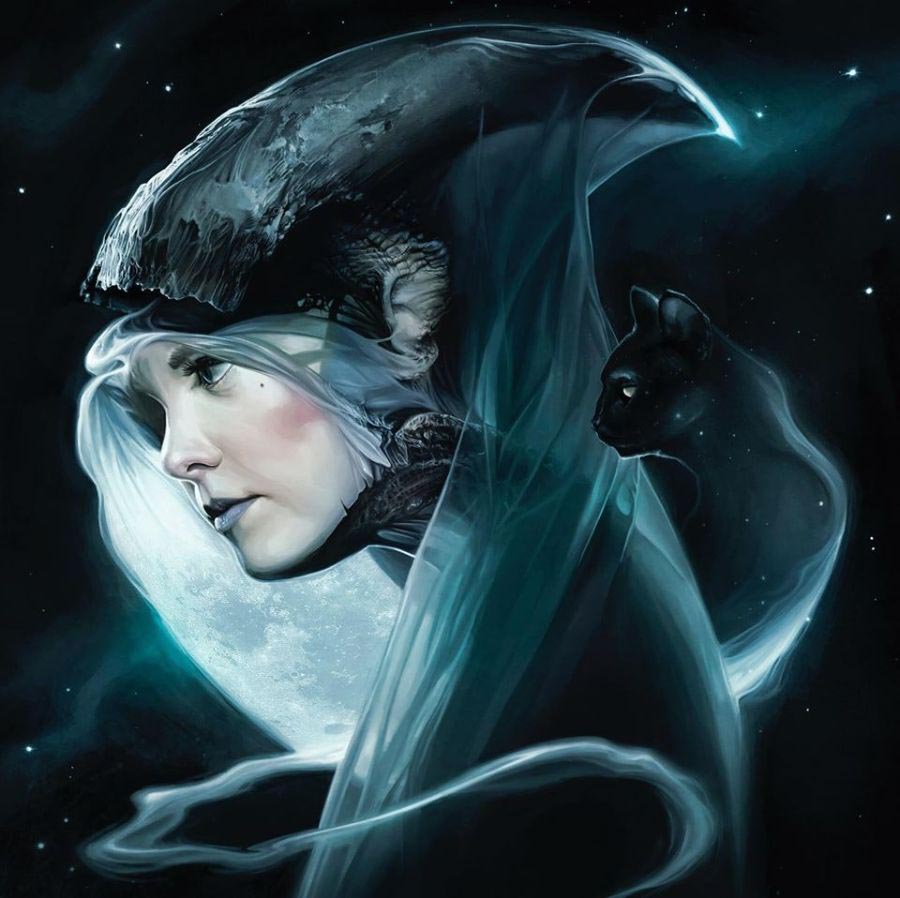
Did your illustration skills deepen as a result of your university training, or do you think that you would have inevitably arrived at the same place (creatively) by pursuing a self-taught path?
I’ve always believed that learning is the result of experience and hard work. I know there are self-taught artists out there who have excelled, but the experiences I received while attending university put me exactly where I needed to succeed creatively. I’m not just talking about artistic skills, but the business side as well. Being artistic and business savvy is so important while navigating the real world. I might have still ended up being a creative professional without university training, but I definitely wouldn’t be at the same level that I am now.
Would you say that your relatively rapid artistic ascension is the result of an intense work ethic? The right connections? Obsessive levels of illustration perfectionism?
A long time ago I decided I was going to live or die by my art. I turned down numerous full-time design jobs (with benefits, no less!) and decided to focus on my freelance illustration work. I definitely have an intense work ethic and I knew the only way to be successful at one thing was to lose everything else. If I didn’t get that gig or make that connection or hit that deadline, I would starve. Not only did I put myself in a survivor scenario, but I also pursued jobs I wanted with people I needed to work for… even if they didn’t know it yet.

Your relationship with Zenescope Entertainment has been extremely fruitful. They hired you — while you were still relatively green around the artsy gills — to illustrate the incredibly well-received graphic novel prequel to New Line Cinema’s 1995 crime thriller Se7en. It must have felt like a dream come true to design seven different sin-themed covers and also layout each issue. Still, given how highly scrutinizing diehard fans of pop culture can sometimes be, was that responsibility a double-edged sword?
When I was given the opportunity to work on Se7en, I was definitely worried about the reaction of diehard fans, mostly because I was one of them! I had to take a second to think about signing on because the movie Se7en is a sacred movie that is perfect, as is. After reading Zenescope’s take on creating a prequel to the movie, I was convinced that I could add to the mythology without taking anything away from the original. Dream jobs are definitely hard to come by, especially that early in your career. Having the opportunity to build onto Se7en is something that will always be a highlight of my career.
Once your Se7en comic books were released into the world, do you recall any fan critiques (positive or negative) that you took to heart? Did any of their comments result in you further honing your craft?
For the most part, the reactions to the Se7en comic books were positive. I received a lot of fantastic reviews of my artistic contributions. Fans absolutely loved diving back into the world of the famous serial killer, John Doe. I created all of my work digitally, and back then there were only a handful of artists working that way. The positive feedback I received from fans of that series definitely helped give me the confidence to continue exploring digital painting.
Were you a comic book geek prior to lending your professional artistic talents to the genre? Is that why the work you did on Se7en was already so polished despite your tender young age and newbie-biz status?
I honestly never read a comic book before doing work in the industry. I’m not sure if that was a good thing or bad thing. I do think it helped me create work that stood out and wasn’t “standard” for comics.
What must an illustrator do to take a single graphic novel cover from the concept stage to completion? What time commitment is required for that type of project? Are you paid per completed cover rather than per each hour that you work on the project?
Cover artwork, whether it’s for a comic, book or album is all the same. It is still the job of the artist to take the stories/songs and create one image that can grab someone’s attention and make them want to explore the material deeper. Rates are always paid per cover. Sometimes that’s great if a concept comes together fast and the work flows uninterrupted. Most of the time, though, getting paid by the hour would probably be more lucrative! My commitment (time-wise) is quite different for each project. Most of my time is spent coming up with ideas and concepts. Once that is nailed down, I can sink into the final piece of art.
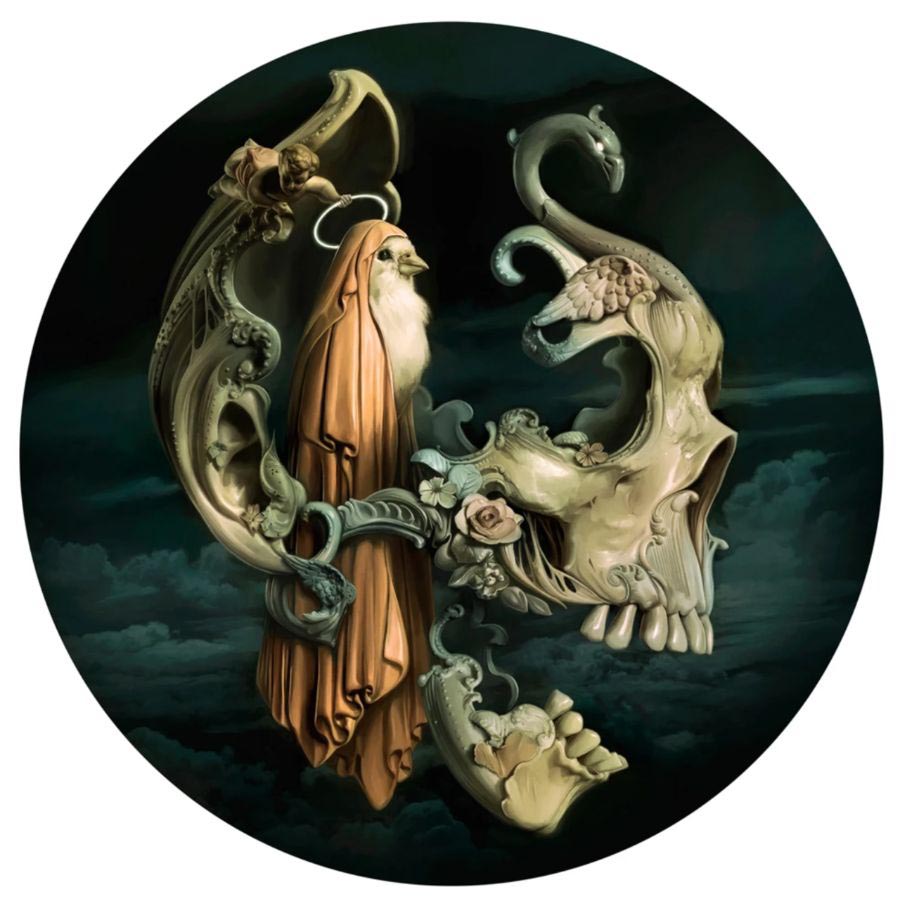
Is that more stressful than creatively exhilarating, or the other way around?
Every piece of artwork I have ever created involves some form of stress and exhilaration. I think it is just the nature of being creative. I stress almost constantly during the concept stage. Then, I am exhilarated when I find a concept that excites me. Working on the final piece is a complete roller coaster of things going extremely well followed by a spell of self-doubt and second-guessing. It keeps me on my toes and helps me focus on always getting better at my craft.
Zenescope Entertainment must have been quite pleased with your Se7en artwork. They hired you to illustrate more than 40 covers for their WB fantasy drama-inspired series of Charmed-themed comic books. Much has been made of Madam Tussauds doing a poor job of creating wax representations of their celebrity residents. You, on the other hand, did a wonderful job of creating impressively realistic comic book likenesses of Holly Marie Combs, Alyssa Milano and, Rose McGowan. How did you accomplish that?
I was fortunate while working on the Charmed comic book series to have access to a CBS archive of photos. They owned the license for the show. I used a combination of their reference photos and my own photographic references — my wife posed for almost all of those covers! Not only did the extremely dedicated Charmed fan base keep me on my toes, but every cover and likeness had to be approved by CBS. I was lucky to meet Rose McGowan and Holly Marie Combs, who were both extremely happy with how their illustrated likenesses looked, so I think I passed the test. : )
Your illustration skills were also tapped by Zenescope when they launched their Ripley’s Believe It Or Not comic book series. For aspiring illustrators who might be reading this, would you mind offering insight into how to become an entertainment company’s go-to creative guru?
It’s all about creating good working relationships with your clients. Neil Gaiman once said: “Most people get work because their work is good. They are easy to get along with. And because they deliver the work on time. And the secret is… you don’t even need all three. Two out of three is fine.” I have always tried my best to accomplish all three on that list and I think Zenescope knows they can expect that each time they have a new project for me.
As with so many passions that transition into paid positions, have you ever experienced artistic burn out as a comic book illustrator?
The thing I love about illustrating is that no matter what field I’m working in, the projects always present new challenges. Especially with comic book covers. The process of reading a new story, conceptualizing ideas and putting those together in a cohesive cover illustration always keeps things interesting.
What are the most notable challenges that come with being a comic book cover designer and frequent interior artist?
Both cover art and interior art have their separate challenges. For covers, you need to capture the most compelling aspects of the story in one attention-grabbing image. As an interior artist, you have to capture the characters, their emotions and how they interact with the story. You also have to find the best way to frame each scene. Patience is a tremendous asset, haha!
Being both an illustrator and a fine artist definitely have their pros and cons. I love floating between both, but creatively, I love being a fine artist. It’s almost like being a wild bird. There is a freedom to create what you want without feeling caged in by another person’s ideas.
Were there times during the comic book cover art creation process when you had to argue why your concepts deserved to be published?
Each project and client is different. Some clients have 100% faith in what I bring to the table. Some clients need to feed the demand of their audience and will make adjustments to fit their demographic. There are definitely times as an artist when you need to stand up for your ideas. Sometimes you do need to persuade a client to see your vision, but you also have to be open-minded. There is so much to learn if you have the opportunity to work with a well-established art director. It’s important to recognize that. I have found that I become a better artist by being open during the creative process.
In your personal experience, do comic book artists ever get to execute a visual concept in whatever way they see fit? Or, is it a far more rigid process?
When I worked on the Charmed comics, I had to adhere to a much more rigid process. The project dealt with a licensed property and likenesses. CBS had very strict guidelines on what I could do and what I couldn’t do.
Which do you prefer? Being commissioned to illustrate entertainment-themed art (comic books, games, album covers) or producing gallery-caliber art? Why?
Being both an illustrator and a fine artist definitely have their pros and cons. I love floating between both, but creatively, I love being a fine artist. It’s almost like being a wild bird. There is a freedom to create what you want without feeling caged in by another person’s ideas. Being an illustrator is like being a pet bird. The cage isn’t a bad thing if it’s in the right hands. While you might have to compromise some of your vision, the right client can give you the security and comfort you might need.
You’ve created an extensive amount of entertainment-themed art for Orbit Books, Wizards of the Coast and Zenescope Entertainment. Did you end up acquiring art groupies who are specific to that genre?
One thing I love about art is the ability to connect with people through my work. I’ve been very fortunate to meet so many wonderful people, especially from working on Charmed and Se7en. Both fan bases, very opposite in their own amazing ways, have embraced my work and have made me feel like I’m a part of their families.
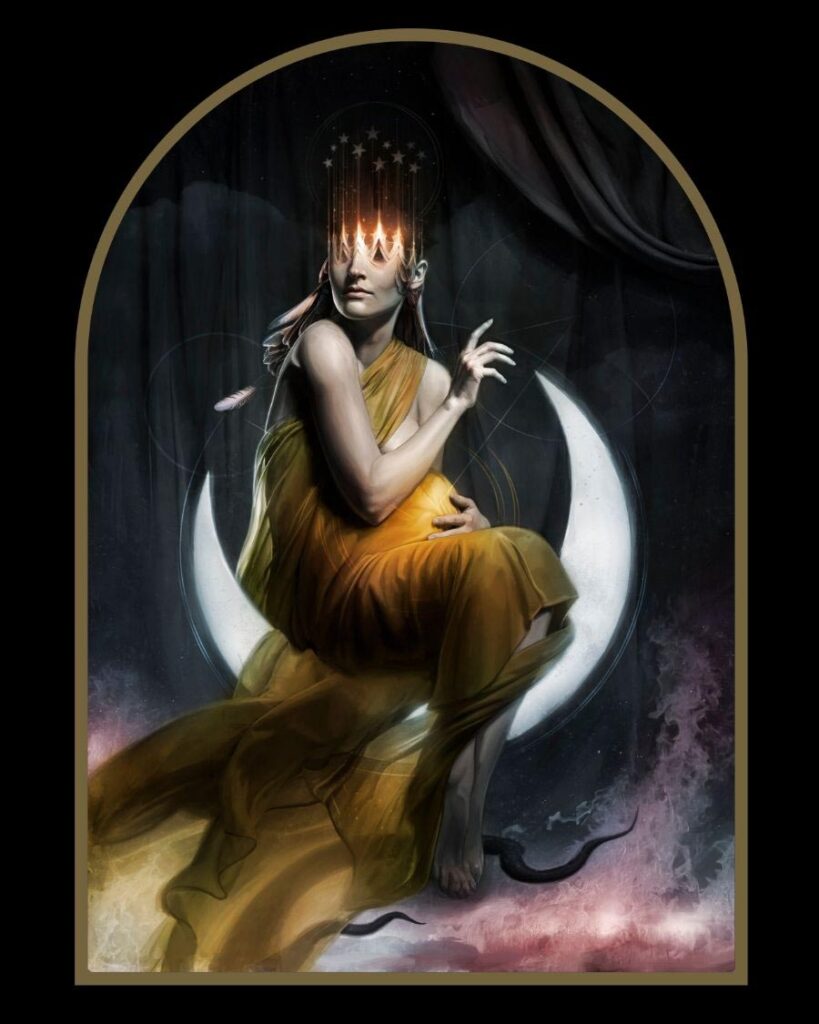
You have been commissioned by several bands throughout the years to design visually arresting stage imagery. Now that your artwork is gracing the latest Stabbing Westward album cover, is this is an artistic direction that you want to continue pursuing with other musicians?
Music is key to my creativity and production. I see it as an additional muse for my work. That includes everything from listening to movie scores during the sketch phase to playing fuel-driven music that keeps me focused and working on the final piece. It’s a creative full circle to have the opportunity to work with musicians. Stabbing Westward is one of the bands that I have been listening to ever since I took art seriously. It is surreal to have your artwork represent a band who had a part in influencing your artistic career. I would love to do more work with other musicians, but it isn’t something I actively pursue.
Which three bands best summon the vibe of your artwork?
I think something like always evolves. Lately, it has probably been Tool, Chelsea Wolfe and Dead Man’s Bones (Ryan Gosling’s band… seriously, check them out.)
Have you ever thought about which contemporary musicians you’d love to ‘rebrand’ or bestow with a Seidman makeover? Perhaps the Jonas Brothers? (Heheheheeee!)
Instead of rebranding a contemporary pop artist with my work, I would actually like the challenge of doing it the other way around. The Jonas Brothers might be a far stretch, but I could see working with an artist like Lana Del Rey. I like the idea of creating some sort of haunted work for her that is more emotional than literal.
In October 2019, you and your wife (sassy/classy retro pin-up photographer Celeste Giuliano) unveiled your very first artistic collaboration. The result was a collection of four retro surrealist portraits called HYPNOCHROMATIC. When I look at them, I think: one part Disney hopped up on far too many poppy seed bagels, one part Pierre et Gilles, one part Marie Antoinette, and one part Morticia Addams’ mega ‘tude. Is that what you were going for?
Yes. Disney on hallucinogenic bagels, Pierre et Gilles, Marie, and Morticia are some of our favorite things. In fact, anything that is beautiful in a haunted sort of way is my, and my wife’s, cup of arsenic tea.
The colors that you incorporated into your collaborative series give the onlooker a false sense that perhaps all is not so rotten in the state of Denmark. Upon closer scrutiny, the slithering snake, hair-nesting spiders, and birdhouse soul vibe suggest otherwise. Did you and Celeste hash out your visual concept individually, or as a team?
My wife and I worked side-by-side every step of the way, from concept to finish. We would sit down, discover stories or ideas and decide how to flesh them out. Each of us definitely had a special skill set that we brought to the table. Celeste handled the styling and photoshoot. I painted the surreal aspects of each image. So, we both contributed our ideas and direction throughout the entire process. Finding a way to contribute equally, we were able to create something unique yet reminiscent of our individual styles.
Your creative collaboration with Celeste was so well received that you’ve already hinted that a follow-up project is happening. Can you give Beautiful Bizarre Magazine readers some insider information regarding your concept and timeline?
We would love to further explore what we call “retrosurrealism” with new portraits and possibly some larger-scale pieces. One of the proudest moments I have ever had as an artist was seeing those pieces complete and we would both love to build off of that. Celeste and I are extremely busy with our own art careers, so finding the time to work together is always difficult. Still, we will be making a point of carving out time this year to create a few new pieces.
What does it feel like to be in a position where other up-and-comers look toward you for guidance and creative pearls of wisdom?
For me, conversations with fellow artists have opened so many new ways of thinking. It’s an opportunity to understand more about the craft, industry and problem-solving. The key is to always learn and gain knowledge. If I can pass just a tidbit of what I have learned to an up-and-coming artist, then that is a great feeling.
As a younger artist, do you recall a “you can do it” moment or piece of advice from someone you looked up to that helped you to feel empowered?
As a younger artist, I admired (and still do) the artist Dave McKean. He achieved great success creating digital artwork in the late 90s when everyone dismissed digital work as inferior to traditional work. While I never met him personally, his interviews and his artwork always gave me the confidence and drive to keep pushing my digital work when everyone urged me to go the traditional route.

Please accept our sincere congratulations for becoming the 3rd Prize Winner of Beautiful Bizarre Magazine’s 2019 Digital Art Award! Your dark surrealistic digital painting Aokigahara strikingly summons the eerie legacy of Japan’s final resting place for so many broken souls. Among the most stirring subtleties in your winning image, the clouds are parting and your subject’s heart is still intact. In spite of the palpable despair, were you still trying to convey the teeniest sense of hope?
I feel that in most artwork, the artist’s subconscious can sometimes be seen leaking through. There’s a shimmer of “hope” in the piece in spite of the fact that I didn’t consciously intend there to be. Usually, I am a very hopeful and optimistic person in life. Part of my subconscious was saying that even though your heart feels the pressure of life, it is still beating.
We would love to hear your thoughts on the Beautiful Bizarre Magazine Art Prize. What was the process like for you? Did it meet your expectations?
Beautiful Bizarre Magazine does such a fantastic job of showcasing artists. I believe that this contest is built out of their respect for artists and helping the community grow and thrive. The love and support I have gotten so far has been overwhelming and beneficial as an artist.
Why did you enter the Beautiful Bizarre Magazine Art Prize?
For artists, entering contests like the Beautiful Bizarre Magazine Art Prize can be an important step toward getting your work in front of someone new.
What do you feel you have gained from this experience?
Winning this award has given me an invaluable opportunity to have my work shared with an even bigger audience. I have this wonderful interview as well as an upcoming editorial in Beautiful Bizarre Magazine. Both will help showcase my work and help me continue to do what I love for new fans.
Would you recommend it and encourage others to enter? If so, why?
There is no harm in entering an art contest that has the incredible incentive of showcasing your work to a wider audience, like the Beautiful Bizarre Magazine Art Prize. I absolutely encourage artists to enter art contests, especially this one. Beautiful Bizarre Magazine really cares about the artistic community and showcasing artists.

